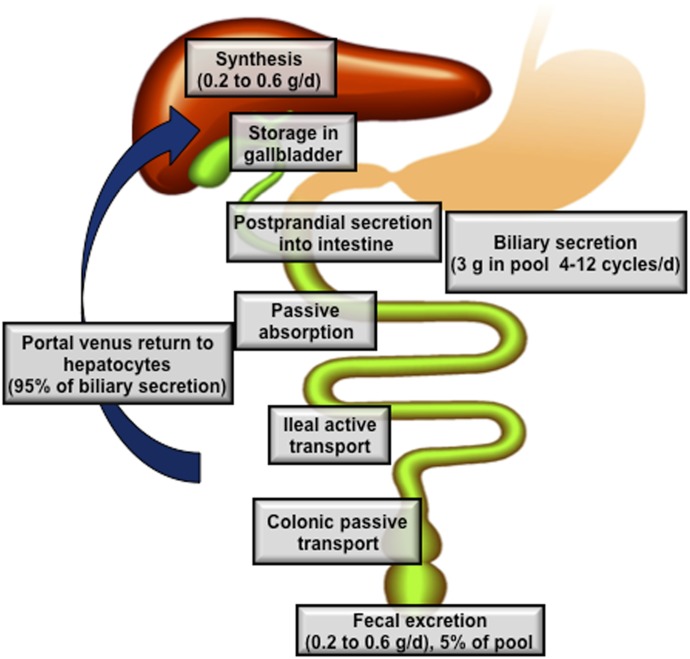Fig. 3.
Enterohepatic circulation of bile acids. The human bile acid pool consists of approximately 3 g of bile acids. Food intake stimulates the gallbladder to release bile acids into the small intestine. An average man produces approximately 0.5 g bile acid per day by synthesis in the liver, and secretes approximately 0.5 g/day. Conjugated bile acids are efficiently reabsorbed in the ileum by active transport, whereas a small amount of unconjugated bile acids is reabsorbed by passive diffusion in the small and large intestines. The first-pass extraction of bile acids from the portal blood by the liver is very efficient. Small amounts of bile acids that spilled over into the systemic circulation are recovered in kidney. The bile acids in the pool are recycled 4–12 times a day.

